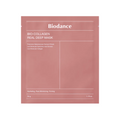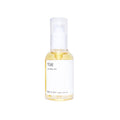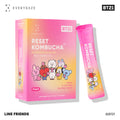M-Pick 2: Everything about Sunscreen
When I was young, my mom used to put thick layer of sunscreen wherever I went and I hated it. <(`^´)> It made my face unnaturally white, and that super uncomfortable oily feeling on my skin was not my favorite. Now I know, as a biochemist, I realize she did the right thing. It does prevent skin cancer and furthermore prevents fine line and pigmentation. Today, I will talk a little further about the core of Asian beauty - sun block.
What is sunscreen?
Generally, we can roughly divided sunscreen into 3 different types.

Type 1: Physical sunscreen
So, physical sunscreen veils your skin with thin layer of mineral particles so it makes sunlight be reflected from your skin rather than absorbed. Representative ingredient can be zinc oxide and titanium oxide. Since it is not absorbed into your skin, it does not stimulate skin much so it can be used on sensitive skin or baby skin. But at the same time, it can be a little uncomfortable since the mineral layer remains on the top of your skin. The biggest problem of physical sunscreen is white cast, and you generally need oil type cleanser to completely remove physical sunscreen.
P.S. There are number of researches prove that titanium oxide can be problematic for acne prone skin. ( ̄ε(# ̄)︴

Type 2: Chemical Sunscreen
Instead of using mineral coating, chemical sunscreen use carbon based molecules. Chemical sunscreens use a little more complicated mechanism. The chemical molecules work as a barrier as well but when they got attacked by UV, they undergo exothermic reaction (releasing heat to the environment.) So these chemical molecules undergo reaction instead of your skin cells. (Great sacrifice!) Oxybenzone , Avobenzone or many other molecules can be used as chemical sun filter. They are generally colorless and have watery / refreshing texture than physical sunscreen so it is widely used “oil-free” sunscreens. They can be refreshing but may irritate skin as well. So you have to try before you buy any. ㄟ(≧◇≦)ㄏ
Type 3: Mixture of 1 & 2
Nowadays almost all companies try to mix these physical / chemical filters to maximize sun protection and minimize the feeling of uncomfortable.
Then what is SPF and what is PA?

Sun Protection Factor refers to the time that sunscreen can protect your skin from UV B. Everyone has different threshold time until you got burn without sunscreen. So, SPF X means you can stay X times longer under the sun with the given sunscreen. So for example, if your skin’s threshold is 10 min and you wear sunscreen with SPF30, you can stay under the sun for 300 min without get burned. (I am not saying you have to find out your burning threshold time. It is generally 10 to 20 min.) So it does not mean a sunscreen with SPF50 blocks UV B than a sunscreen with SPF30.
PA (protection grade of UVA) is a relatively new concept, and it shows that how well the sunscreen protects you from UVA. (UVA up-regulates the MMP that degrade elastin and collagen, meaning you will lose firmness and gain wrinkle if you got exposed. Scarrrrrrrrrryyyyyyyyyyyyo(╯□╰)o). Since there is no standardized system to measure PA or (PPD for European cosmetics), I won’t mention it precisely here but more + after PA or higher number of PPD means better protection against UVA.
Recommendation
Code 9 UV defense long lasting protector SPF 50+ / PA +++
The texture of water capsule in the base is very interesting. It tones up your skin and makes your skin glows. If you like dewy skin, this sunscreen is recommended under your primer.

Leaders Aqua Sun Liquid SPF 50 / PA +++
It has very refreshing and non-sticky texture, so good for oily skin in summer. It does not leave much white cast, so if you like natural skin, Leaders Aqua Sun Liquid may be a good choice.

Too cool For School Jean George Llong SPF 50 / PA +++
Too Cool for School’s Jean George LLong has non-sticky, fast absorbing texture as well. It has slight ivory color, so you may use and skip the make-up base or CC cream.

Skinfood Tomato Sun cream SPF 36 / PA ++
It has very matt texture. Interestingly, this sunscreen has very natural white cast, some Korean bloggers use this as “natural bare skin make up(안색크림).”
Reference
Latha, M. S., Martis, J., Shobha, V., Sham Shinde, R., Bangera, S., Krishnankutty, B., … Naveen Kumar, B. R. (2013). Sunscreening Agents: A Review. The Journal of Clinical and Aesthetic Dermatology, 6(1), 16–26.
Hayden CG, Cross SE, Anderson C, Saunders NA, Roberts MS
Skin Pharmacol Physiol. 2005 Jul-Aug; 18(4):170-4.
Marionnet C, Grether-Beck S, Seité S, et al. A broad-spectrum sunscreen prevents UVA radiation-induced gene expression in reconstructed skin in vitro and in human skin in vivo. Exp Dermatol.













